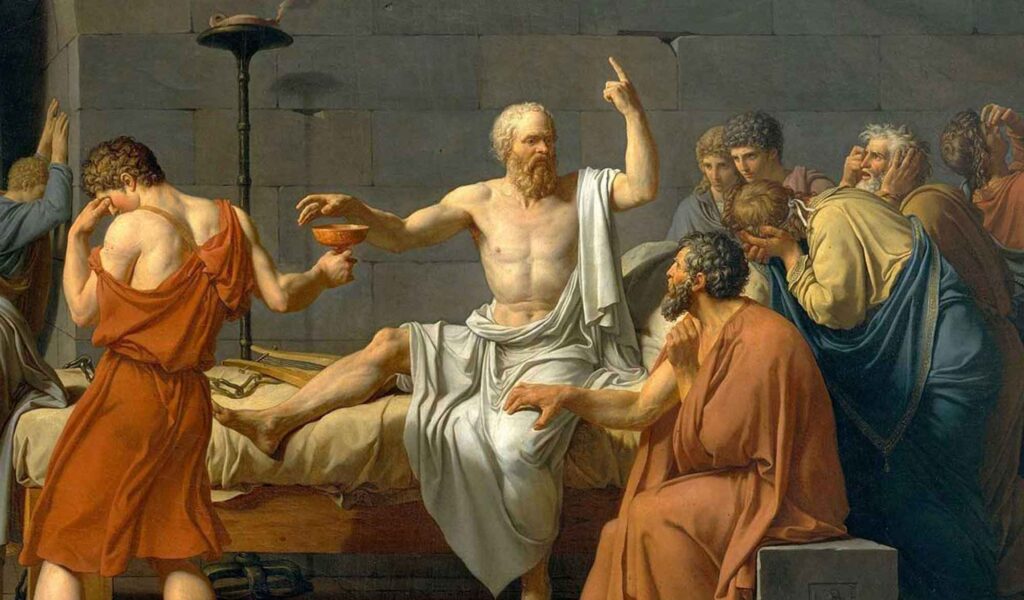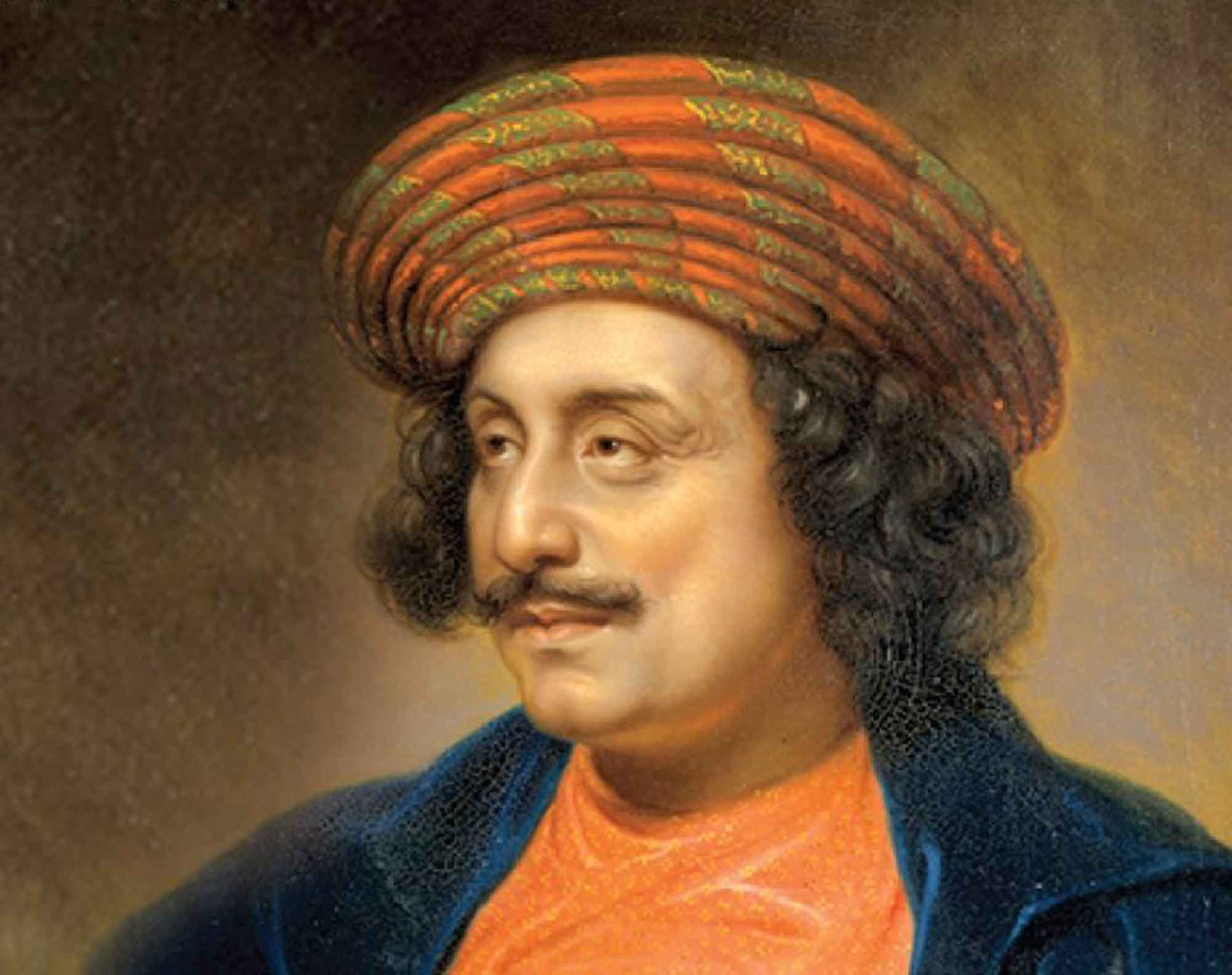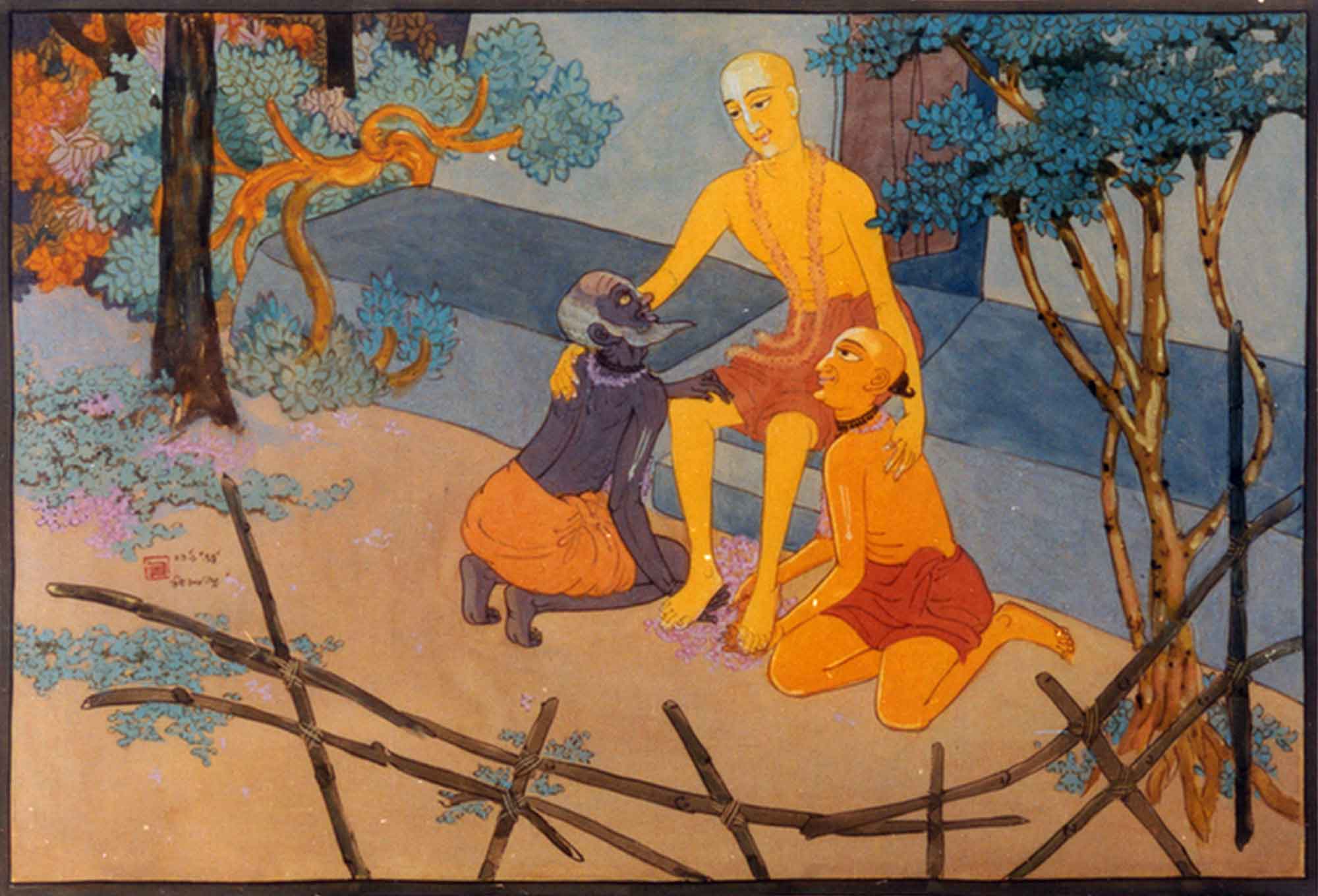Overview
Śrī Vidagdha-Mādhava o Śrī Lalita-Mādhava Nāṭaka-Dvaya Sambandhe Vaktavya (Talks Regarding the Two Dramas, Śrī Vidagdha-Mādhava and Śrī Lalita-Mādhava) is an undated and unpublished work of Śrīla Bhaktivinoda Ṭhākura which first appeared in the 20th volume of The Gauḍīya in 1942. In this article, Bhaktivinoda speaks about Śrīla Rūpa Gosvāmī's two dramas Vidagdha-Mādhava and Lalita-Mādhava, and examines the rasa within them as regards pārakīya and svakīya bhāva.
(translated by Sanātana Dāsa & Parameśvarī Devī Dāsī)
These two books have been written by Śrīmad Gauḍīya rasācārya, Śrīmad Rūpa Gosvāmī. In Śakābdā 1454 (1532 CE), while sitting in Śrī Gokula, the younger brother of the mahātmā Sanātana, composed the book Vidagdha-Mādhava.* Again, in Śakābdā 1459 (1537 CE) in Śrī Bhadravana, during the month of Jyaiṣṭha, on Sunday, on the Caturthī-tithi, he completed the book, Śrī Lalita-Mādhava.**
*nanda-sindhu-bāṇendu-saṅkhye saṁvatsare gate
vidagdha-mādhavaṁ nāma nāṭakaṁ gokule kṛtam
(“This drama called Vidgdha-Mādhava was written in Gokula in the year 1589.”)*
Translator’s Note: 1589 is the year according to the Vikrama Samvat, the Indian calendar starting from the time when King Vikramāditya expelled the Śakas from India.
**nandeṣu-vedendu-mite ṣukrasya māsasya tithau caturthyām
dine dineṣasya hariṁ praṇamya samāpayam bhadra-vane prabandham
(“In the Śāka year 1459, in the month of Śūkra, on Sunday, the day of Caturthi, after offering my obeisance unto Hari, I have completed this book in the forest of Bhadra.”)
From the explanation which is given in Śrī Caitanya-caritāmṛta, Antya-khaṇḍa, we can see that Śrī Rūpa Gosvāmī came to Śrī Śrī Mahāprabhu in Nīlācala during the first year of Śrī Śrī Mahāprabhu’s final pastimes. As translated from the Antya-līlā–
prathama paricchede rūpera dvitīya-milana
tāra madhye dui-nāṭakera vidhāna-śravaṇa
(“The first chapter describes how Rūpa met the Lord for the second time, and within that section how the Lord heard his two dramas.”)
In 1438 Śakābda (1380 CE) the Lord’s final pastimes began. In that year only, Śrī Rūpa Gosvāmī started composing the drama. As written at the beginning of the Antya-līla:
ethā prabhu-ājñāya rūpa āilā vṛndāvana
kṛṣṇa-līlā-nāṭaka karite haila mana
vṛndāvane nāṭakera ārambha karilā
maṅgalācaraṇa ‘nāndī-śloka’ tathāi likhilā
pathe cali’ āise nāṭakera ghaṭanā bhāvite
kaḍacā kariyā kichu lāgilā likhite
(“Then, following the Lord’s instructions, Rūpa returned to Vṛndāvana. He desired to compose dramas abut Kṛṣṇa’s līlā. In Vṛndāvana, he began his drama by writing the maṅgalācaraṇa and the nāndī–śloka. On the road [to Bengal], he pondered over the events of the drama and wrote a few notes.” – Caitanya-caritāmṛta, Antya-līlā 1.34-36)
uḍiyā-deśe ‘satyabhāmā-pura’-nāme grāma
eka rātri sei grāme karilā viśrāma
rātre svapne dekhe eka divya-rūpā nārī
sammukhe āsiyā ājñā dilā bahu kṛpā kari’
“āmāra nāṭaka pṛthak karaha racana
āmāra kṛpāte nāṭaka haibe vilakṣaṇa”
svapna dekhi’ rūpa-gosāñi karilā vicāra
satyabhāmāra ājñā pṛthak nāṭaka karibāra
vraja-pura-līlā ekatra kariyāchi ghaṭanā
dui bhāga kari’ ebe karimu racanā
(“In Orissa there is a village called Satyabhāmāpura, and he rested for a night in that village. At night, he saw in his dream a woman with a divine form. She came towards him and with great mercy, gave him the following instruction – ‘Compose a separate drama about me, and by my mercy, it will be most unique.’ Upon seeing this dream, Rūpa Gosvāmī considered that since it was Satyabhāmā’s order, he should compose a separate drama.”- Caitanya-caritāmṛta, Antya-līlā 1.41-44)
āra dina prabhu rūpe miliyā vasilā
sarvajña-śiromaṇi prabhu kahite lāgilā
‘kṛṣṇere bāhira nāhi kariha vraja haite
vraja chāḍi’ kṛṣṇa kabhu nā yāna kāhāṅte
(“The the next day, the Lord went to see Rūpa and sat with him. Then the crest-jewel of omniscient personalities spoke as follows – ‘Do not take Kṛṣṇa out of Vraja. He does not leave Vraja at any time.’” – Caitanya-caritāmṛta, Antya-līlā 1.65-66)
eta kahi’ mahāprabhu madhyāhne calilā
rūpa-gosāñi mane kichu vismaya hailā
“pṛthak nāṭaka karite satyabhāmā ājñā dila
jānilu, pṛthak nāṭaka karite prabhu-ājñā haila
pūrve dui nāṭaka chila ekatra racanā
dui-bhāga kari ebe karimu ghaṭanā”
(“Upon saying this, Mahāprabhu went to perform His midday duties, and Rūpa Gosvāmī was left somewhat astonished in his mind. ‘Satyabhāmā gave the order to compose a separate drama – but now I understand it was the order of the Lord to write a separate drama. Previously, the two were one composition. Now I shall describe the events in two divisions.’” – Caitanya-caritāmṛta, Antya-līlā 1.68-70)
One day, Śrīman Mahāprabhu, accompanied by His devotees, discussed the two books of Śrī Rūpa. There, Lalita-Mādhava was discussed upto the second part. At that point, Vidagdha-Mādhava was almost complete. Even one or two ślokas were recited from the fourth section of Lalita–Mādhava. From all these discussions it can be seen that only during the year 1438 Śakābdā (1380 CE), the vraja–līlā of Vidagdha–Mādhava and Lalita-Mādhava were composed. However, it is written at the end of the book Vidagdha-Mādhava that this book was completed in the year 1454 Śakābdā (1532 CE). Five years after that, Lalita–Mādhava was completed. By that time, it was almost four years since Śrī Śrī Mahāprabhu had disappeared. When Rūpa Gosvāmī examined these two books, almost twenty years had passed.
These two dramatic works are the unprecedented results of the potency of Śrīmad Rūpa Gosvāmī’s spiritual perception. Everywhere within Vidagdha–Mādhava, pārakīya (paramour love) is the very basis of the parama-rasa (supreme mellow). In this alone rests the supreme ujjvala–rasa of Rādhā and Kṛṣṇa. The fact that goloka-līlā is vraja-līlā is brightly illuminated therein. Whatever is necessary for nitya-līlā is fully abundant within Vidagdha–Mādhava. The wonderful position of the beautiful form of Rādhā-Kṛṣṇa’s eternal parakīya-rasa is observed in this book. Upon reading this drama, supreme happiness will arise in those who are rasikas (relishers) of that supreme rasa. Such rasikas are of two types, namely ekāṅga–āsvādaka (those who relish one particular division of bhakti) and sarvāṅga–āsvādaka (those who relish all the divisions of bhakti). Generally, those who are ekāṅga–āsvādaka specifically respect Vidagdha–Mādhava alone, and show honour to Lalita–Mādhava by paying daṇḍavat–praṇāma to it. Those who are sarvāṅga–āsvādaka, realising the significance of both books, attain equal happiness in both these works. As long as the significance of both these is not felt, then Lalita–Mādhava will not be adored.
After reading Lalita–Mādhava wherein Śrīmatī Rādhikā gave the message that She would perform jala-praveśa (entering the waters of the Yamunā to end Her pain of separation) and was later married to Kṛṣṇa in the form of Satyabhāmā, Bhakta Sī___ Dāsa could not find happiness, and considering the following śloka of Śrī Rūpa Gosvāmī to be bhāva–virodha (adverse to bhāva), he was driven away.
priyaḥ so ’yaṁ kṛṣṇaḥ saha-cari kuru-kṣetra-militas
tathāhaṁ sā rādhā tad idam ubhayoḥ saṅgama-sukham
tathāpy antaḥ-khelan-madhura-muralī-pañcama-juṣe
mano me kālindī-pulina-vipināya spṛhayati
(““My dear friend, this is the same beloved Kṛṣṇa meeting Me here at Kurukṣetra. I am also that same Rādhā, and we Both feel the same joy of union –and yet My mind yearns for the forest on the bank of the Kālindī where the fifth note of His flute sweetly plays within My heart.”- Padyāvalī 386 and Caitanya-caritāmṛta, Antya-līlā 1.79)
Whatever doubt and grief appeared in Bhakta Sī___, to dispel that we discussed both books in detail and came to the conclusion that both of them have the same siddhānta (conclusion) and tātparya (significance). The heart of Śrī Rūpa in both books is moistened by the supreme rasa of pārakīya in comparative measure. In Vidagdha–Mādhava, that rasa is discussed as anvaya-rūpa (in a direct way), and again in Lalita-Mādhava, that rasa is discussed as vyatireka-bhāva (in an indirect mood). Those who have attained the softness of Rādhā-Kṛṣṇa’s unlimited aprākṛta-śṛṅgara-rasa (divine conjugal mellows) attain unbroken rasa from both books. Just as in Vraja. vipralambha (separation) arises in order to increase sambhoga–rasa (the mellows of union), and to enliven Rādhā’s exclusive prema, there is the opposition of Śrī Candrāvalī – similarly, based on a difference in bhāva from Dvārakā in Nava-Vṛndāvana, a new type of opulent sambhoga is portrayed due to the charm of the sublime Hero (Kṛṣṇa). Whatever form may be there, there is no samarthā–rati (affection that controls Kṛṣṇa); only samañjasā-rati (affection that is balanced due to social norms) can be aroused, and that is why he (Śrī Rūpa) has expressed his appreciation for the eternal pārakīya-rasa of Vraja which is manifest in this Nava-Vṛndāvana līlā. Śrīmatī’s prayer, which is the tenth verse of Lalita–Mādhava written below, is given only to establish the eternality of Vraja’s pārakīya-rasa.
sakhyas tā militā nisarga-madhura-premābhirāmīkṛtā
yāmī me samagaṁs tu saṁstavavatī śvaśrūś ca goṣṭheśvarī
vṛndāraṇya-nikuñja-dhāmni bhavatā saṅgo’yaṁ raṅgavān
saṁvṛttaḥ kim ataḥ paraṁ priyataraṁ kartavyam atrāsmi me
(“I have met with my naturally sweet, loving, beautiful sakhīs. I have found my sister [Candrāvalī], and all her associates, and my mother-in-law, the queen of the cowherds [Yaśodā]. and I have attained your company within the groves of the forest of Vṛndā, and this also makes me most happy. What more can be obtained for me than all these things?” – Lalita-Mādhava 10.36)
tathāpīdam astu
cirād āśā-mātraṁ tvayi viracayantaḥ sthira-dhiyo
vidādhyur ye vāsaṁ madhurima-gabhīre madhu-pure
dadhānaḥ kaiśore vayasi sakhitāṁ gokula-pate
prapadyethās teṣāṁ paricayam avaśyaṁ nayanayoḥ
(May there be more – “To those persons that reside in the extremely sweet Madhupurī, who, with a steady heart have yearned to attain You for a long time – O Lord of Gokula, kindly appear before their eyes as their youthful friend.” – Lalita-Mādhava 10.260)
kiñca –
yā te līlā-pada-parimalodgāri-vanya-parītā
dhanyā kṣauṇī vilasati vṛtā māthurī mādhurībhiḥ
tatrāsmābhiś caḍula-paśupī-bhāva-mugdhāntarābhiḥ
samvītaṁ tvaṁ kalaya vadanollāsi-veṇur vihāram
(Furthermore – “That auspicious land within Māthura which is imbued with sweetness, surrounded by forests which emit the fragrance of Your līlā, is the place where You, with the effulgent flute sitting upon your lips, must sport with us, the beautiful gopīs, who are overwhelmed with emotions.” – Lalita-Mādhava 10.261)
Śrī Kṛṣṇa has said, tathāstu (‘May it be so!’) in regards to that. Also, in the seventh verse of Śrī Vidagdha-Mādhava, Paurṇamāsī Devī has prayed:
prathayan guṇa-vṛndā-mādhurīm adhi-vṛndāvana-kuñja-kandaram
saha rādhikayā bhavān sadā śubham abhyasyatu keli-vibhramam
(“Expanding the sweetness of Your various qualities, may You always engage in auspicious playful pastimes with Rādhikā within the secret bowers of Vṛndāvana.”)
The conclusion of Śrīmad Rūpa Gosvāmī is that all the pastimes of Śrī Kṛṣṇa are eternal. Vraja-līlā, māthura-līlā and dvārakā–līlā are all eternal. Based on whether it is prakaṭa (manifested) or aprakaṭa (unmanifested), the līlā is of two types. Based on the will of Kṛṣṇa, the Līlā-Śakti reveals the pastimes in two ways based upon whether they are prakaṭa or aprakaṭa. The līlā which is seen in this physical world is prakaṭa. That which is not seen in the physical world is only aprakaṭa. Vraja–līlā, māthura–līlā and dvārakā–līlā are within the aprakaṭa–līlā. One of the names of Vraja and mathura-līlā is goloka-līlā. Dvārakā-līlā is said to be the līlā of Śrī Kṛṣṇa in Vaikuṇṭha. The form which is in the aprakaṭa–līlā also manifests within the prakaṭa-līlā. As it is said in Śrī Laghu-bhāgavatāmṛta:
tatrāpi gokule tasya mādhurī sarvato’dhikā
(“The sweetness of the Lord in Gokula is superior than that in the other places.” – Śrī Laghu-bhāgavatāmṛta, pūrva-khaṇḍa 284)
tatraiva –
dhāmāsya dvi-vidhaṁ proktaṁ mathurāṁ dvāravatī tathā
mathurāṁ ca dvidhā prāhur gokulaṁ puram eva ca
yat tu goloka-nāma syāt tac ca gokula-vaibhavam
(“The abode of the Lord is described as being in two parts – Mathurā and Dvārakā. It is also said that Mathurā also has two divisions – Gokula and the city of Mathurā. The opulence of Goloka appears as the abode of Gokula.” – Śrī Laghu-bhāgavatāmṛta, pūrva-khaṇḍa 277)
Therefore, only vraja–līla, within the states of prakaṭa and aprakaṭa, is the highest. Concerning the prakaṭa state, it is written:
vraje prakaṭa-līlāyāṁ trīn māsān viraho ‘munā
tatrāpy ajāni visphūrtiḥ prādurbhāvopamā hareḥ
tri-māsyaḥ paratas teṣāṁ sākṣāt kṛṣṇenā saṅgatiḥ
(“During the prakaṭa-līlā, the people of Vraja were separated from Hari for three months. Then Kṛṣṇa reappeared and for three months was directly amongst them.” – Śrī Laghu-bhāgavatāmṛta, pūrva-khaṇḍa 269)
Based on differences in līlā, such as when travelling to Dvārakā etc. Svayam-Kṛṣṇa’s Vāsudeva aspect manifests:
atha prakaṭa-rūpeṇa kṛṣṇo yadu-purīṁ vrajet
vrajeśatvam ācchadya svaṁ vyañjan vāsudevatām
(“In His prakaṭa form, Kṛṣṇa goes to the Yadu-purī (Mathurā). Covering His position as the Son of the king of Vraja, He manifests Himself as Vāsudeva.” – Śrī Laghu-bhāgavatāmṛta, pūrva-khaṇḍa 268)
For the Vraja-vāsīs, that līlā (of Kṛṣṇa leaving Vraja for Mathurā) manifests as if in a dream. Thus it is said:
vraje viharamāṇe ’smin prādurbhūya harau tadā
bhavet tasya pure yātrā svapnavad vraja-vāsinām
(“When Hari appeared in Vraja, the inhabitants of Vraja, who had felt separation from Him, took His journey to Mathurā to be a dream.” – Śrī Laghu-bhāgavatāmṛta, pūrva-khaṇḍa 472)
The significance is that for the associates of Vraja, any consideration of Dvārakā is momentary like a dream. Whenever Kṛṣṇa performs that līlā, the Vraja-vāsīs also travel to Dvārakā to attain momentary peace. That the Daughter of Vṛṣabhānu and Her associates are also connected to dvārakā-līlā is indicated in some Purāṇas. Taking recourse of such indications, Śrī Rūpa Gosvāmī has composed Lalita–Mādhava. The relishing of svakīya-bhāva (lawful conjugal emotions) in Dvārakā is merely a different display of Kṛṣṇa’s role as a hero. Exhibiting such heroism, Kṛṣṇa reveals the greatness of vraja-līlā. Although His sambhoga becomes successful, due to the scarcity of samarthā–rati in that state, both the Hero and the Heroine desire the happiness of Vraja. As stated by Sri Rādhikā in Śrī Lalita-Mādhava:
(smitaṁ kṛtva) bahiraṅga-janālakṣyatayā śrī-gokulam api sva-svarūpair alaṅkaravāmeti
(Smiling, Rādha says – “Invisible to outsiders, let Us decorate Śrī Gokula with Our original forms.”- Śrī Lalita-Mādhava 10. 37)
Kṛṣṇa replied, “O Dearest One! Allow Me to do that!”
Ekānaṁśā Devī has said:
sakhi rādhe mātrā saṁśayaṁ kṛthāḥ. yato bhavatyaḥ śrīmad-gokule tatraiva vartante. kintu mayaiva kāla-kṣepārtham anyathā prapancitam. tad etan manasy anubhūyatām. kṛṣṇo ‘py esa tatra gata eva pratīyatām.
(“O my Friend Rādhā! Have no doubt about this, because at this moment You are there in Śrīmad Gokula. However, by the power of time I have arranged this in another way. Thus You may perceive this within Your mind. You should understand that Kṛṣṇa is certainly here.” – Śrī Lalita-Mādhava 10. 37)
The significance is that Their meeting in Dvārakā is like a dream which is created by Yogamāyā. To nourish the eternal pārakīya of Śrī Kṛṣṇa, the svakīya-madhura-bhāva is introduced merely as a plaything by Śrī Yogamāyā.
In the first part of Śrī Vidagdha-Mādhava, Paurṇamāsī has said that the marriage of the gopīkas is actually false, yet Yogamāyā is exhibiting it as if it is factual. Therefore the marriage of the gopīs with others, or Kṛṣṇa, are all created by Māyā, and they are not actually true. Śrī Rādhā and Her own kāya–vyuha (expansions in the form of the gopīs) are all Kṛṣṇa’s eternal sakhīs in pārakīya-rasa. From time immemorial, in order to nourish rasa, they have the abhimāna (self-conception) of eternal pārakīya-bhāva. Hence they did not have a svakīya nature in Goloka and Bhauma-Vraja (Vraja within the material world). In Dvārakā and Vaikuṇṭha, the līlā they perform with Vāsudeva is only in svakīya-bhāva, that also is dream-like and one of their specific playful pastimes.
Vraja-līlā is eternal. Kṛṣna, the Son of Nanda, never leaves Vraja to go to any other place. The Supreme Potency, Śrīmatī Rādhikā, also never leaves Vraja in Her svayaṁ–rūpa (original form) to go anywhere else. In order to perform specific līlās with the prakāśa forms of Vāsudeva, forms such as Rukmiṇī and others are manifested – thats all! Therefore, pastimes such as Śrīmatī entering water and dying in separation of Kṛṣṇa etc. are like dreams and are merely daśā (a transcendental state of being). Amongst the various transformations of śrī-kṛṣṇa-prema, all these līlās are also a cause of supreme happiness.
ānanda-kuñja-sadane nava-khaṇḍa-dhāmni
śrī rūpa-nāṭaka-phalāni nirupayanti
rādhā-padābja-rata-duḥkhani-varaṇāya
māghe’sitāṣṭama dine hari-dāsa-dāsāḥ
(“On the eighth day of the dark moon of the month of Māgha, residing at Svānanda-sukhadā Kuñja, within the nine islands of Navadvīpa, this servant of the servants of Hari has explained the results of Śrī Rūpa’s dramas which give attachment to the lotus feet of Śrī Rādhā, which remove all types of suffering.”)













